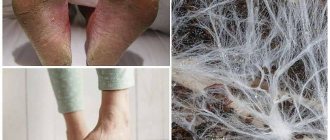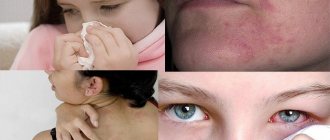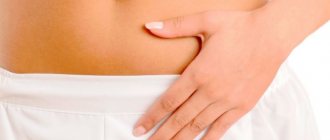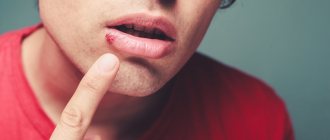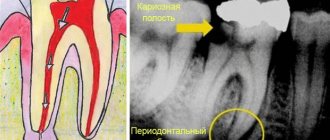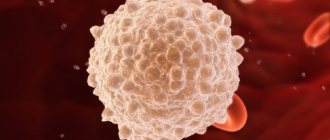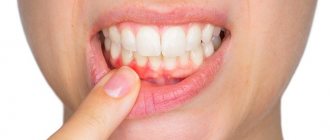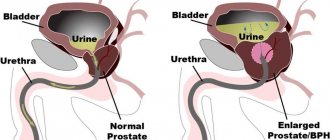Author of the article: Nivelichuk Taras, head of the department of anesthesiology and intensive care, work experience 8 years. Higher education in the specialty “General Medicine”.
Article publication date: 04/07/2016
Article updated date: 12/02/2018
The concept of “new generation chondroprotectors” is quite vague. There is no clear definition “from the dictionary” of which drugs belong to this “new generation”. Personally, as the author of the article, I can distinguish 3 groups of drugs, which one way or another can be considered a new generation of these drugs:
- products based on hyaluronic acid,
- preparations based on plant extracts,
- means that include a transport system.
In some “old” chondroprotectors containing chondroitin and glucosamine, drug companies add vitamins, plant extracts and other components that do not have a direct effect on cartilage. Such funds are also positioned as “new generation”. However, in comparison with the above-mentioned groups of chondroprotectors, this group can be called a “new generation” with a stretch.
Next, we will talk about the classification of chondroprotectors, the latest drugs (and compare them with older drugs).
Mechanism of action of chondroprotectors
The annotation attached to each drug by the manufacturer indicates that the active ingredients of chondroprotectors are glucosamine and/or chondroitin sulfate. They are compounds that are building materials for the formation of connective tissue, activation of its regeneration processes and prevention of intervertebral disc degeneration.
As a result of their regular intake into the body, the synthesis of cartilage tissue should increase. Also, glucosamine and chondroitin sulfate should prevent the destructive effect of enzymes on cartilage by inhibiting hyaluronidase, which normally breaks down hyaluronic acid into monomers.
In addition, they should improve the physicochemical properties of the synovial fluid, which prevents friction of the articular surfaces. As a result, according to the manufacturers, when taken in a course, chondroprotectors lead to a decrease in the severity of hernia symptoms, especially pain and limited mobility in the affected segment of the spine.
On the one hand, everything is clear and should really work as stated. But on the other hand, cartilage tissue does not have the same nutritional mechanism as other tissues, because it is not directly supplied with blood.
Comparative table of new chondroprotectors
Below is a comparative table of the most effective new chondroprotectors.
(if the table is not completely visible, scroll to the right)
| Fermatron | Gialgan | Gialgel | Ostenil | Piascledine | |
| Chondroitin sulfate (mono) | – | – | + | – | – |
| Glucosamine (mono) | – | – | – | – | – |
| Hyaluronic acid | + | + | + | + | – |
| Plant extracts | – | – | + | – | + |
| Restoration of cartilage structures | + | + | + | + | + |
| Pronounced analgesic effect | + | + | + | + | + |
| Anti-inflammatory effect | + | + | + | + | + |
Physiology of cartilage tissue
Cartilage and intervertebral discs, in particular, are unable to receive nutrients directly from the bloodstream. If this were so, then numerous vessels would completely entwine the cartilage and impede its movements and would often be injured, which would lead to the formation of large hematomas.
Clever nature has solved the issue of nourishing cartilage tissue in a different way. It is provided through synovial fluid due to the processes of diffusion of nutrients into the articular surfaces. With each step or other load on the spine, the cartilage is compressed and unused tissue fluid is forced out of it. With immediate unloading, the pressure on the cartilage decreases sharply, which leads to the absorption of fresh, nutrient-rich tissue fluid into it. The same mucopolysaccharides – glucosamine and chondroitin sulfate – act as such substances.
Nature has determined that the intervertebral disc will constantly wear out and be immediately restored due to the supply of glucosamine and chondroitin to it through the synovial fluid. At the same time, destruction and restoration processes occur throughout the entire articular surface, which ensures the preservation of the normal thickness and functionality of the discs. An imbalance in this system is caused, first of all, by metabolic disturbances, which inevitably arise and intensify with age, which becomes the cause of diseases of the musculoskeletal system.
The benefits of glucosamine and chondroitin
Glucosamine, chondroitin and methylsulfonylmethane are a combination of three substances that I use to treat certain joint diseases, especially arthrosis. Supplements are used to relieve pain, reduce inflammation, and restore cartilage tissue. Benefits of supplements:
- Glucosamine helps increase the production of hyaluronic acid, a component of synovial fluid.
- They are involved in the construction of cartilage tissue.
- Methylsulfonylmethane balances and controls several enzymes in the body. Increases joint flexibility, reduces swelling and pain.
These compounds also help you lose weight. You should consult your doctor before purchasing individual dietary supplements or combination tablets. They slowly restore damaged joints; it may take more than one week for the effect of taking them to appear.
Excessive profits of pharmaceutical companies or real benefits for joints?
Today there is a significant overproduction of medicines for various purposes, and the offered range largely exceeds people's needs. In the wake of a general focus on a healthy lifestyle and prevention of the development of various types of diseases, which is combined with a fairly strong illiteracy of the population in medical matters, drug manufacturers have a huge field for earning multi-billion dollar sums.
You can earn good revenue without spoiling the reputation of a pharmaceutical company by producing medicines with very questionable effectiveness, but without side effects. To achieve maximum results they must:
- have indications for use in chronic, indolent diseases that do not pose a threat to the patient’s life and are not accompanied by the development of critical conditions (intervertebral hernias are exactly that case);
- dispensed without a prescription, i.e. does not contain potent narcotic substances;
- have a low cost and do not require supplies of rare raw materials;
- be easy to use (produced in the form of capsules, tablets for oral use);
- the positive effect obtained as a result of long-term use should be exclusively subjective and vary from patient to patient.
In general, chondroprotectors meet these parameters. In the presence of back pain, the only indicator of the effectiveness of the treatment, and especially self-medication, is the patient’s personal opinion, which can often be erroneous.
Since chondroprotectors are expensive and require long-term use, the positive dynamics during intervertebral hernias and the subjective improvement in the patient’s condition can be attributed to psychosomatics. It has been proven that if a person is fully confident in using an effective drug, which is actually a dummy (placebo), he will experience positive changes in his health.
Evidence-based principles in medicine
Today, unreasonable spending on products that do not have a sufficient evidence base of effectiveness is an unaffordable luxury, both for individuals and for the public health care system. Therefore, back in the 90s of the last century, the term “EvidenceBasedMedicine” was introduced into medical practice, implying an exclusively scientific approach to all medical aspects.
Therefore, all treatment provided with this approach must have a clear algorithm of actions with the prescription of drugs with proven effectiveness. Each doctor, when developing treatment tactics for an individual patient, should ask the following questions:
- What is the goal of the prescribed therapy: eliminating symptoms, reducing the risk of relapse of the disease, or absolute recovery?
- Which of the existing drugs are most effective?
- How will the treatment be structured?
Thus, it is obvious that chondroprotectors are not able to completely cure a patient with osteochondrosis or arthrosis. Even with their absolute effectiveness, dehydration and cartilage destruction are inevitable age-related changes. In addition, there is no data on the effectiveness of chondroprotectors, since manufacturers do not conduct full-fledged and, at the same time, very expensive clinical studies, perhaps due to the fact that they do not want to give up large profits. After all, the drugs sell well all over the world and do not cause any harm. Therefore, the annotations to them usually indicate that studies of the drug on pregnant women, children and patients of other special groups have not been conducted.
On the other hand, people continue to use these drugs and often praise them. Then, perhaps, they really work, and research will be carried out by manufacturers later and will form the basis of the evidence base for their effectiveness. To understand this precisely, let’s consider the main representatives of chondroprotectors.
Contraindications and possible side effects
Long-term therapy is one of the features of chondroprotectors, so such drugs are tested most carefully. They have a narrow range of contraindications. It is not recommended to take these medications:
- pregnant women;
- patients with severe renal failure;
- nursing;
- patients with serious gastrointestinal pathologies;
- for bleeding disorders;
- children under 15 years of age;
- in case of an allergic reaction to the components of the drug or individual intolerance;
- with ankylosis of the joint.
Tablet forms of chondroprotectors almost never lead to the development of side effects. In very rare cases, long-term use of the drug can cause stomach pain or provoke various dysfunctions of the liver or kidneys.
Intramuscular and intra-articular injections have a higher concentration of active substances, so these drugs have a much greater risk of side effects. They can cause:
- nausea;
- fluctuations in blood pressure;
- headache;
- heartburn;
- flatulence;
- staining of urine;
- diarrhea or constipation.
The use of chondroprotectors in ointments may cause itching or minor redness. To avoid unpleasant consequences, medications should always be selected with a doctor. If during treatment the patient notices any of the listed side effects, this should immediately be reported to the attending physician, who will replace the drug or adjust the dose and nutrition.
Arthrosis can only be treated if it is started in a timely manner. Therapy with chondroprotectors helps restore cartilage function, increase the volume of synovial fluid and completely eliminate pain. It is very important to follow the doctor’s recommendations and strictly adhere to the dosage of the drug.
Types and individual representatives of chondroprotectors
Over the years of existence, chondroprotectors have undergone changes. As a result, there are two generations of drugs from this group on the modern pharmaceutical market. Representatives of the 1st generation chondroprotectors are Alflutop and Rumalon.
For example, Alflutop contains an extract obtained from a mixture of several types of small sea fish. It is successfully produced in Romania in the form of an injection solution, that is, it involves an intravenous or intra-articular route of administration. But at the same time, due to the lack of evidence of effectiveness, it is not on the list of medicines recommended by WHO, is not approved by the FDA, and is not covered in Cochrane reviews.
Following the first generation of drugs, products based on purified glucosamine and chondroitin sulfate appeared, thus forming the 2nd generation of chondroprotectors. Its representatives include:
- Dona, Elbona, Sustilak, Artracam, Sustagard Artro (contain exclusively glucosamine);
- Mucosat, Artra, Structum, Chondrogard (contain only chondroitin sulfate);
- Teraflex, Stopartrit, Honda, Chondro, Chondroglucid (contain both active ingredients).
Subsequently, manufacturers went further and created 3rd generation chondroprotectors. A prominent representative of this group is Teraflex Advance. Its main difference from older products is the inclusion in the composition, in addition to glucosamine and chondroitin sulfate, ibuprofen.
By the way, ibuprofen is a compound belonging to the NSAID group, which has undergone many studies and has significant evidence of pronounced anti-inflammatory, antipyretic and analgesic effects. All children, young parents and older people are familiar with it, since it is the main component of the widely known drug Nurofen.
This is puzzling, since Teraflex Advance really helps to reduce the severity of pain, inflammation and overall improvement of the condition. At the same time, it is not clear: why pay hundreds of times more for cheap ibuprofen?
By analogy with Theraflex Advance, Arthrokera, Arthrodarin, Diarthrin, Diflexa, etc. entered the pharmaceutical market. They contain diacerein, an unpopular representative of the same group of NSAIDs, as an active ingredient. It has good anti-inflammatory and analgesic properties, which makes these drugs effective. But they do not have any direct effect on the condition of the cartilage, its nutrition and protection. Therefore, it is absolutely unclear why they are positioned as chondroprotectors if, in fact, they are drugs of the pharmacological group NSAIDs.
Selected cases: Inoltra and Piascledine
Inoltra in the USA is positioned as a nutraceutical, that is, a kind of food supplement that can have a therapeutic effect on the body. It includes:
- glucosamine and chondroitin sulfate;
- polyunsaturated fatty acids;
- manganese aspartate;
- vitamins C and E.
Since Inoltra is a dietary supplement, it does not need proof of effectiveness and can be freely sold everywhere.
A particularly interesting drug is Piascledine. It is produced in the form of capsules for oral use, and the active ingredients are avocado (100 mg) and soybean oils (200 mg). The price of a package containing 30 capsules is approximately $20.
If you calculate how many oils are contained in all 30 capsules and compare them with the cost of 100 g of each, which is easily sold in every pharmacy, then their total price will be about 340 rubles. Thus, the cost of Piascledine is approximately 60 times higher and it can be replaced without loss of effectiveness with the same oils purchased at the pharmacy. It’s enough just to drop a few drops into a salad, on a piece of bread, sugar, etc.
But again, there is no evidence that avocado and soybean oils improve metabolism in cartilage tissue, help reduce inflammation, eliminate pain, etc.
How to choose a drug and what to pay attention to?
When choosing products that have a chondroprotective effect, it is advisable to focus on the composition of the constituent substances.
The drugs are:
- with one main active ingredient;
- with chondroprotector and medicinal herbs, minerals;
- combination drugs containing two or more active chondroprotectors.
The duration of treatment depends on the disease, its stage and the condition of the cartilage tissue of the joint.
It is worth noting that the choice of drugs depends on the expected effect, the speed of its onset, and the individual needs of the patient with arthrosis. Medicines must be purchased from pharmacies as prescribed by a doctor. Before purchasing, check the manufacturer of a particular drug, country of manufacture, availability of a certificate of quality, compliance.
Depending on the stage of development of structural changes caused by arthrosis, the weight and age of the patient, different one-time, daily dosages of chondroprotectors are prescribed. Medicines differ in the variants of the produced forms and the method of use.
What is the problem with modern chondroprotectors?
Even the high market price of chondroprotectors would not pose a big problem if they were very effective. But, unfortunately, they cannot correspond to the declared properties, since glucosamine and chondroitin sulfate entering the bloodstream from the gastrointestinal tract are not able to penetrate from the blood into the joint fluid. In this case, every jelly, jellied meat or aspic would be no less effective.
It is easy to check the distribution pattern of any substance in the body after its administration by any method using a simple radioisotope method. Its essence consists in treating the drug with a radioactive label that is harmless to the human body and has a short duration of existence. By X-ray examination it is possible to determine exactly how it is distributed in the body. If an accumulation of drug particles is detected in the joint area, this will become full proof of its effectiveness.
But pharmaceutical companies are in no hurry to use this method and find many excuses. The reality is that glucosamine is recognized as a dietary supplement in the United States. And independent studies of chondroitin sulfate show that its effectiveness is comparable to the placebo effect.
The only research data that manufacturers of chondroprotectors rely on was obtained by subjective assessment of pain by patients using a visual analogue scale. This cannot confirm the presence of any therapeutic effect from taking chondroprotectors, other than the placebo effect.
It would be possible to talk about their effectiveness if we provide the world medical community with radioisotope research data or show that after taking chondroprotectors, there is at least a minimal increase in the thickness of thinned intervertebral discs.
How do chondroprotectors work?
Clinical studies have shown that the most studied chondroprotectors - Glucosamine, Chondroitin - have a symptomatic effect on the manifestations of arthrosis. Similar to painkillers, non-steroidal anti-inflammatory drugs prevent the progression of the disease and inhibit degenerative structural changes in osteochondral tissues. An important property of these drugs is considered to be safety of use and the absence of side effects. This makes them stand out positively when treating patients with chronic comorbidities.
With long-term use of these drugs, a prolonged therapeutic effect is noticeable, which does not happen when analgesics and NSAIDs are discontinued. Radioisotope studies have proven the binding of glucosamine to osteochondral tissues. In terms of the speed of onset of a pronounced analgesic effect, Glucosamine lags behind NSAIDs, but after its onset the analgesic effect was longer. Chondroprotectors for lumbar spondyloarthrosis reduce symptomatic manifestations after 2 weeks of use.
Way out
If the components of cartilage tissue cannot reach their destination through administration through the gastrointestinal tract or intramuscular injections, perhaps this can actually be achieved by application to the skin? In Russia today, Chondroxide ointments and creams are quite popular. But even in this case, no attempts were made to prove the effectiveness of its use.
Tests were carried out only on mice using isotope-labeled 3H-chondroitin sulfate. They showed that 14% of the substance was absorbed, which is generally not bad. But there is one thing... The thickness of subcutaneous fat and muscles over the joints in humans is much greater than in mice. And if we talk about the treatment of herniated intervertebral discs, then these will be completely incommensurable concepts, since these are deep-lying joints.
Thus, we can conclude that the lack of full-fledged clinical trials indicates the reluctance of manufacturers to leave the market and lose the lion’s share of profits. After all, such drugs sell well in all regions without exception.
Competent work of company representatives with loyal doctors also increases sales. Chondroprotectors are prescribed to patients in combination with other medications. And since they must be taken for a long time, the patient’s condition will certainly improve within a month or two. He is unlikely to find out what exactly led to a decrease in the severity of pain: an expensive chondroprotector, an affordable NSAID, or an intra-articular injection of a corticosteroid. And the answer is obvious.
Therefore, patients do not need to spend their last money on undergoing a course of treatment with chondroprotectors. There is a method with precisely proven effectiveness - the injection of artificially created synovial fluid into the affected joint. These are the drugs:
- Fermatron;
- Sinokrom;
- Synvisc;
- Vico-plus.
Literally one injection will help eliminate pain and crunching in joints for six months or a year. These preparations contain sodium hyaluronate, which takes part in the formation of collagen fibers and increasing the strength and elasticity of cartilage tissue.
These injections are usually performed in large, isolated joints. In case of osteochondrosis, restoring each intervertebral disc in this way is difficult, time-consuming and not always justified. In case of pronounced destructive processes or the formation of a hernial protrusion, no matter how much artificial synovial fluid is injected, this will not have a significant effect on its size.
A hernia cannot disappear on its own. Conservative treatment methods can slow down its progression and reduce the likelihood of complications such as compression of nerve roots or blood vessels. But the pathological formation can only be completely removed through surgery.
Classification of fundroprotectors
The principles underlying the classification of chondroprotectors may be different. The most commonly used division is based on what active substances are used in a given drug.
Preparations can be distinguished based on:
- Glucosamine is a substance that directly promotes the synthesis of cartilage and neutralizes almost all substances that harm its tissues.
- Chondroitin sulfate is a high molecular weight compound found in the connective tissue of animals. It is mainly found in cartilage either in free form or as part of the intra-articular fluid. Its function is nutrition and shock absorption in the joint. Chondroitin affects the exchange of phosphorus and calcium in cartilage, it stimulates collagen synthesis, ensuring tissue elasticity, and also inactivates enzymes that destroy cartilage.
- Hyaluronic acid is a polysaccharide contained in the intercellular space, some tissues and body fluids, in particular, intra-articular fluid. One of its most important features is the ability to bind and hold a large number of water molecules. To perform its shock-absorbing function, synovial fluid must have a certain viscosity value, which is provided by hyaluronic acid, and it also reduces the sensitivity of pain receptors inside the joint.
- Combined, containing more than one active ingredient. They have a significantly more pronounced therapeutic effect than monopreparations.
Alexey Kanev, head of the orthopedic surgery department of the Research Institute of Gerontology, will help you learn more about the effects of hyaluronic acid on joints:
Another principle of classification of chondroprotectors is based on the concept of generations of chondroprotectors. Typically there are three generations:
- The first generation includes drugs made from animals and raw materials.
- The second generation includes pure glucosamine, chondroitin sulfate and hyaluronic acid.
- The third, new generation chondroprotectors, include drugs that have a combination of active substances. This includes not only glucosamine, chondroitin and hyaluronic acid, but also vitamins, fatty acids and various substances that provide additional effectiveness of chondroprotectors in the treatment of knee arthrosis.
Let's sum it up
In the USA, chondroprotectors are not included in any protocol or standard for the treatment of musculoskeletal diseases. But due to the high level of trust patients have in them, they are present on pharmacy shelves as food supplements, that is, products with unknown effectiveness.
OARSI, an international organization specializing in the study of osteoarthritis, has identified glucosamine and chondroitin sulfate as inappropriate agents for the treatment of knee arthritis. Should we hope that they will give better results when used in the fight against osteochondrosis and intervertebral hernias?
Therefore, in 2007, the Russian Academy of Medical Sciences issued a resolution to remove from the list of drugs used for drug provision, outdated drugs with unproven effectiveness, including chondroitin sulfate.
In developed countries, patients are prescribed only those treatment methods that are sure to be beneficial and improve their quality of life. Doctors at SL Clinic can also offer you the best ways to deal with intervertebral hernia, which are guaranteed to bring positive changes. And if necessary, our surgeons will perform surgical removal of the protrusion using minimally invasive or open methods.
Benefits of treatment with chondroprotectors
Chondroprotectors for joints not only reduce pain due to arthrosis and osteochondrosis. Their main purpose is that they nourish worn-out cartilage tissue and slow down destruction. Some drugs can restore it. This leads to an increase in the mobility of the knee joints and an improvement in the condition of a spinal hernia. The advantages of treatment with chondroprotectors are that:
- swelling is relieved;
- pain decreases;
- cartilage tissue is quickly restored;
- contains natural components;
- no side effects.
Recommendations for choosing and taking medications
Despite the widespread theory that chondroprotectors differ little from each other and you can choose any one yourself, drugs for joints should be purchased only after consultation with your doctor, who:
- focuses on diagnosis;
- takes into account the degree of damage to joints and cartilage;
- familiar with the composition and mechanism of action of medications;
- studied the results of clinical studies on effectiveness.
This allows him to correctly select chondroprotectors for joints from the list of drugs, their form (tablets, injections) and determine the duration of the course. And the main thing is the need for its use (perhaps the disease is at a stage when using the funds no longer makes sense).
The effect of using the drugs does not occur immediately; it may take several courses of injections and long-term use of tablets (for example, from six months to three years) to feel improvement. Therefore, the patient needs to be patient.
Useful recommendations for patients already taking chondroprotectors:
- Adjust your diet by introducing foods with a high content of vitamins, microelements, and natural collagen (gelatin).
- Normalize your weight and do not put stress on your joints, otherwise the destruction of cartilage will continue, despite taking chondroprotectors.
- Complete the course of treatment, even if at first the effect of treatment is not too obvious (chondroprotectors act slowly).
- Do not replace medications with dietary supplements (dietary supplements), they contain active substances in minimal dosages and are more suitable for long-term prevention of joint diseases than for treatment.
- Move, perform special exercises for the joint (they stimulate the delivery of nutrients to the capsule, improving the composition of the synovial fluid and tissue repair).
Contraindications for taking chondroprotectors:
- Age. Some medications should not be given to children and are intended only for use by adults;
- Pregnancy, breastfeeding period;
- Allergy to medication components;
- Diseases of the gastrointestinal tract;
- Tendency to bleeding, blood clotting disorders;
- Complete destruction of cartilage.
Age Pregnancy Allergies
Gastrointestinal diseases Tendency to bleeding Complete destruction of cartilage
Is it possible to obtain chondroprotective substances from food?
Prevention of disease is the best way to avoid it. If you have a tendency to develop arthrosis (heredity, excess weight), then you should think in advance about preventing the destruction of the knee cartilage. This is easy to do by adjusting your diet.
The most accessible and common chondroprotective products are foods that contain gelatin.
Gelatin is also obtained from the connective tissue of livestock. It is useful not only for joints, but also for immunity and digestion. By including more in your diet:
- Gelatin-based jelly;
- Rich meat broth on bones;
- Jellied meat;
- Jellied;
You will receive healthy chondroitin of natural origin from food. It has also been scientifically proven that chondroitin obtained from fish is more bioavailable and active, which means you need to eat more.
- Salmon;
- Chum salmon;
- Salmon;
- Trout.
But you need to cook the fish correctly. It is best to boil it or eat it lightly salted. It is ideal if you salt it yourself to be sure that no preservatives or flavor enhancers other than salt were used.
What you need to know about chondroprotectors
Before you find out what chondroprotectors are, you need to understand what drugs they refer to (consisting of 1 or 2 components). Today, many firms and companies offer such drugs to help restore cartilage tissue. They contain only two substances: chondrotin sulfate and glucosamine. There is also a substance, hyaluronic acid, which stands apart. It is injected directly into the knee itself. Consequently, such preparations can be of two types, depending on their composition: those that have 1 component, and those that have two main components and additional substances (dilutions).
When it comes to choosing which chondroprotectors are best, you can scour the Internet, but it is best to ask a person who has been prescribing such important drugs for a long time. Not a single study has been conducted on the topic of the best drug, and what is most interesting is that both of them contradict each other. In the first case, doctors say that it is better to take drugs that contain two important components at once. This is due to the fact that the substances seem to reinforce each other. The other side’s opinion is to take tablets containing one substance (so as not to interfere with each other’s effect). What are the reasons that there are two different opinions? Two of them can be noted:
Products with hyaluronic acid
Hyaluronic acid is the main component of joint fluid. It gives it additional density and also guarantees normal sliding of the cartilage. New generation chondroprotectors containing hyaluronic acid are among the most common medications.
Important! Products containing hyaluronic acid should not be used in the presence of inflammatory processes in the joint tissue.
If there is inflammation, it is initially eliminated with the help of anti-inflammatory drugs or hormones, and then the joint is treated with hyaluronic acid. The list of such drugs includes:
- Fermatron;
- Suplazil;
- Ostenil;
- Gialgan fidia.
Fermatron is characterized by the fact that it contains an active substance, an analogue of natural joint fluid. This medicine is available in the form of injections that are injected directly into the joint cavity. Fermatron helps quickly eliminate pain, relieves inflammation, and also helps the production of natural hyaluronic acid, while restoring cartilage tissue and joint mobility. To complete the full course of therapy, it is enough to make 5 injections, one per week.
Hyalgan fidia is an aqueous solution of the saline composition of hyaluronic acid. This is a pretty good medicine that helps stimulate joint repair and reduce pain. The drug is injected into the joint once a week for 5 weeks. This remedy is prohibited for use in cases of liver dysfunction, and it is also not used to treat children.
The drug Suplazin is considered a kind of substitute for natural joint fluid. Its active substance is part of hyaluronic acid. It helps maintain the required functions and activity of the joint and provides the required analgesic effect. This drug is injected directly into the joint cavity. The course of therapy is 3 procedures, 1 injection once a week.
The drug Ostenil is an aqueous solution of sodium salts. This is a fairly good and effective remedy that helps:
- activate mechanisms for restoring joint mobility;
- promotes the formation of natural joint fluid;
- relieves the inflammatory process.
Ostenil is used in the form of injections that are injected into the joint cavity. You need to give 3-5 injections with breaks of 7-10 days.
What forms of the drug should be taken at different stages of the disease
If we are talking about the initial stages of development of gonarthrosis, then experts recommend taking modern medications of a combined composition in capsules or tablets and enhancing their effect by using ointments. In addition to the necessary chondroitin and glucosamine, capsules often contain anti-inflammatory substances, as well as vitamins and minerals.
At the second stage of gonarthrosis, it is better to use intramuscular injections. In the third degree, an integrated approach to treatment is recommended. Here you cannot do without injections - both intramuscular and intra-articular. The fourth, advanced stage of arthrosis can no longer be treated with chondroprotectors.
It should also be remembered that the success of treatment is achieved not only by medications, but by eliminating the cause of the disease. For example, excess weight, which puts pressure on the joints and under the influence of which they are forced to change. One of the components of successful treatment of arthrosis of the knee joint is proper nutrition and feasible physical activity: walking, swimming, physical therapy.
Prices, manufacturers
You can purchase a new generation chondroprotector in a landline network or order it from an online pharmacy. The table will help you navigate the variety of drugs by price and manufacturer.
| Name | Release form | Manufacturer country | Price, rub. |
| Movex Active | 30 tab | Synmedic, India | 1140 |
| Artron complex | 30 tab | UNIPHARM INC, USA | 1010 |
| Artron Triactive | 30 tab | UNIPHARM INC, USA | 1100 |
| ARTRA | 120 tab | UNIPHARM INC, USA | 2230 |
| Fermatron Plus | 1.5% synov solution. liquid for injection | Hyaltech Ltd, UK | 5850 |
| Glucosamine Chondroitin Complex, dietary supplement | 60 tab | SOLGAR, USA | 2970 |
| Teraflex Advance | 60 caps | BAYER, USA | 1540 |
| Ostenil | syringe for intramuscular injection 0.02/2 ml | ROBERTS HEALTHCARE RUS, Germany | 3240 |
| Sustamed Toad Stone, dietary supplement | 30 caps | FITOSILA, Russia | 175 |
| CONDROnova | 30 caps | CORAL-MED, India | 440 |
arthr tablets for joints
When choosing a drug, it is important to consider, incl. and its cost - the price of the medicine is high, the course of treatment is long, skipping a procedure, an unforeseen break or refusing injections is fraught with a worsening prognosis. To achieve results, you must take a responsible and balanced approach to the decision to start treatment and choose the most effective chondroprotector.
Preparations with extracts of medicinal plants
New chondroprotectors with extracts of medicinal plants help quickly restore joint mobility, reduce inflammation and eliminate existing pain. A striking example of this group of chondroprotectors is Piascledine. This product contains soybean and avocado oil. Due to the presence of such components, such a drug promotes:
- collagen synthesis;
- restoration of joint structures;
- decreased production of enzymes that destroy cartilage tissue;
- eliminating the inflammatory process and pain.
Piascledine is available in capsule form. However, it is worth remembering that this remedy may have certain contraindications, so you should first consult a doctor regarding its use.
What chondroprotectors are best for arthrosis of the knee joint?
Below are the drugs prescribed for knee gonarthrosis. These drugs have proven themselves well and are trusted by doctors and patients. Let's consider the country of manufacture, release form and active ingredient of each of them.
- Artra – USA, tablets, complex 0.5 glucosamine + 0.5 chondroitin sulfate.
- Theraflex – UK, capsules, combined.
- Dona - Italy, solution or powder in capsules, single preparation (glucosamine).
The drug "Chondroitin" can be bought in pharmacies from 480 rubles, and treatment with "Arthra" tablets will cost about 2000 rubles
- Structum – France, capsules, single preparation, chondroitin sulfate.
- Chondrolone – Russia, injections, single drug (chondroitin sulfate).
- Elbona – Russia, injections, single drug (glucosamine).
- Chondroitin AKOS – Russia, capsules, single preparation (chondroitin sulfate).
You can buy medications in pharmacies across the country. On average, the cost of “Don” will be about 1,300 rubles for 750 ml and “Teraflex” from 800 rubles
Which drug is better? The question posed this way has no answer. There is no best chondroprotector for the treatment of knee arthrosis, it all depends on the specific situation. The best drug can only be for a given patient in his specific situation. This must be remembered and be sure to consult with a specialist when choosing a medicine.
A few words about third generation chondrorotectors. It should be noted that there is no clear generally accepted classification of which chondroprotectors should be classified as a new generation. Chondroprotectors for joints of the new generation are drugs that have successfully overcome the disadvantages inherent in drugs of previous generations. They allow you to obtain a therapeutic effect much faster, have virtually no side effects, have few contraindications and are very highly effective due to their effect on various joint structures.
You can highlight useful information on the topic of treatment from neurologist Mikhail Moiseevich Shperling:
Properties of new generation drugs
The widespread use of third-generation combination drugs is explained by their positive effect on various pathological processes that arise during the disease:
- Reduce the inflammatory process, allowing cartilage to regenerate;
- Replenish the reserves of structural elements for joint restoration;
- Reduce pain symptoms;
- Improve joint function and mobility;
- With long-term use, the development of the pathological process is inhibited;
- Reduce the need to take non-steroidal anti-inflammatory drugs;
- Some drugs are an additional source of sulfur, which is part of chondroitinsulfuric acid, which affects the elasticity of connective tissue.
Achieving the above-described effects of glucosamine and chondroitin is achieved through different mechanisms of action, so their combined use is justified and recommended by most doctors.
Injection forms of chondroprotectors are more preferable , despite the fact that they are less popular. Injections make it possible to administer the drug directly to the site of inflammation, increasing its bioavailability and effectiveness.
Some clinical data suggest that when taken orally, the bioavailability of chondroitin may be very low and administration may be virtually useless.
Some medicinal chondrolytics include a component such as MSM (Methylsulfonylmethane).
MSM in chondroprotectors is an organic compound that has sulfur in its structure and exhibits a pronounced anti-inflammatory effect.
Chondroprotectors with MSM
MSM is naturally found in some vegetables, fruits, and grains, but most of this substance is lost during cooking. By receiving it from the outside, the body improves cell renewal processes, metabolism, and the formation of ligaments and bones.
Recommendations for patients
Any medicine should be used only as prescribed by a doctor. In order for chondroprotectors to have a beneficial effect on joints, they must be used at an early stage of the development of the disease. The patient must comply with the following recommendations:
- there is no need to put too much stress on the damaged joint;
- a person should not be too fat; with a decrease in body weight, joint pain also decreases;
- do not make movements that place stress on the damaged joint;
- do not overcool the lower extremities;
- carry out physical therapy;
- do not forget about rest;
- good for hiking.
By following these recommendations and using chondroprotector drugs, you can achieve the expected result. What drugs are classified as chondroprotectors and what diseases do they cure?

